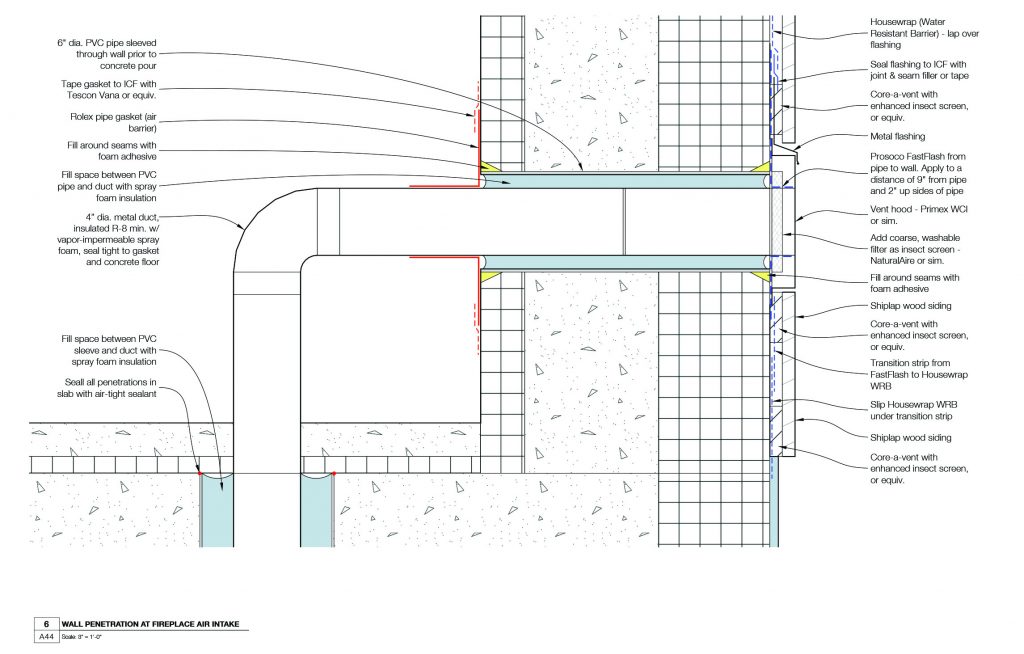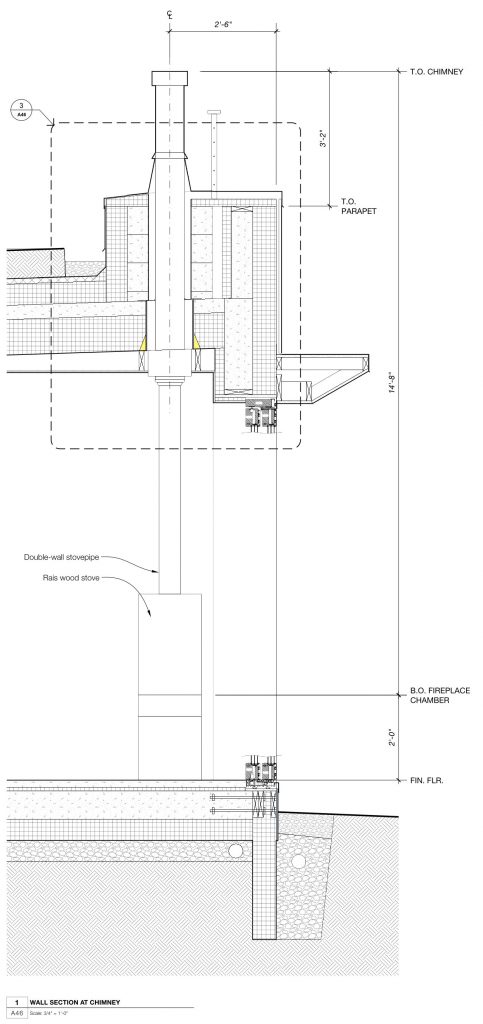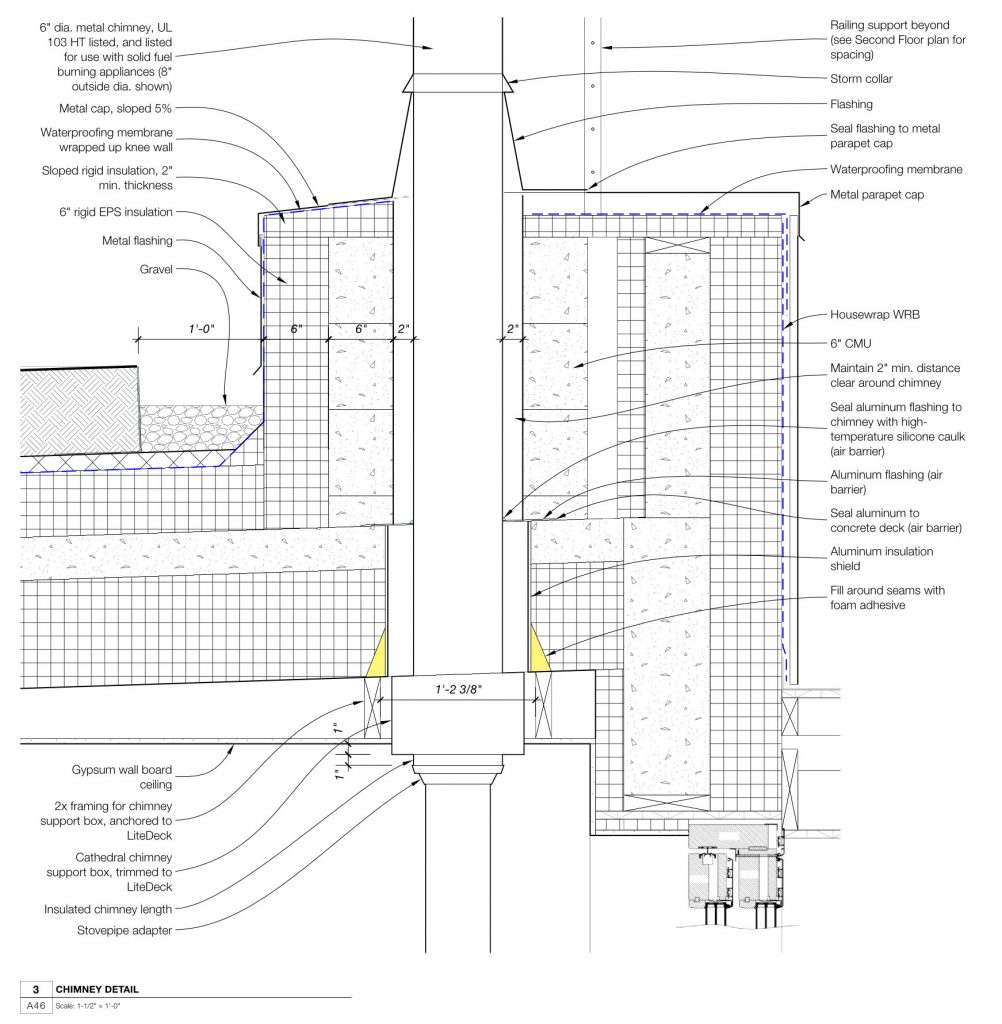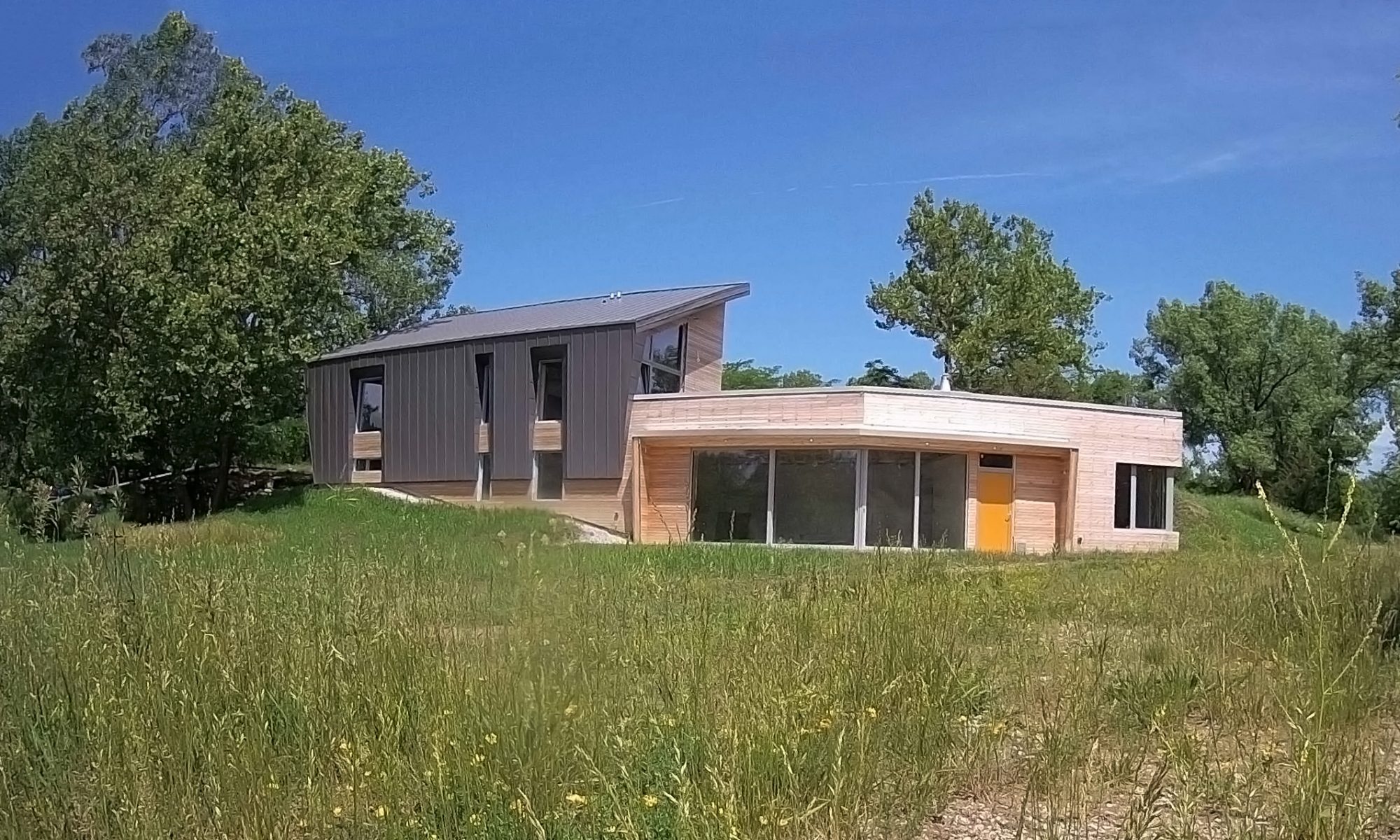How should you design and detail a wood stove in an airtight Passive House? Here are some of the considerations, and the approach we used on this project.
First off: should you even have a wood stove in a Passive House? This is rightly a matter of some debate. It’s certainly not necessary, as our temperature data have shown: this particular house has proven it can stay habitable even through the coldest of cold snaps—maintaining ~55 degF even in -20 degF outdoor temperatures without mechanical heating.
And, a wood stove in a Passive House comes with downsides and risks:
- Conventional fireplaces and stoves use indoor air for combustion. In a super airtight home, this could easily use up all the oxygen and present a grave risk to occupants.
- Properly sealing the chimney (and, in our case, the air intake) can be challenging—risking the air tightness targets.
- A dedicated outdoor air supply can be a condensation risk in the winter where the cold pipe encounters the warmer, moister indoor air.
In this home, my strategy was as follows:
- Select a wood stove with closed combustion and dedicated outdoor air supply. In our case, we are using a Rais stove. Outdoor air is drawn in next to the front door, is routed beneath the slab, and will connect to the bottom of the stove. The outdoor air supply consist of a pipe within a pipe: a non-combustable metal pipe sleeved through a larger PVC pipe.
- Put as much of the chimney as possible within the building’s thermal envelope to help create good draw.
- Provide air sealing at the chimney by connecting aluminum flashing to the concrete deck (the roof air barrier) and the chimney with high-temperature silicone caulk.
When the stove is in use, the home may actually overheat (even in cold Iowa winters), so cracking some windows may be necessary.
The details below show the following:
- Air intake, detailed to shed bulk water (exterior tape & flashing) and ensure air-tightness (interior boot connected to ICF).

- Overall chimney section

- Chimney detail

One point of clarity: This home is not certified as a Passive House, but follows Passive House design principles, including the envelope R-values, minimization of thermal bridging, air tightness, and dedicated fresh air system with energy recovery.

Hi, I’m looking at putting a wood stove in our passive house that we’re building. Are you happy with your decision? Did everything seem to work out ok? Thanks for the feedback.
Mike, the owners have actually NOT installed the wood stove, so unfortunately I don’t have much insight here! The home remains ready for a wood stove should they want one, with a chimney and dedicated fresh air pipe. I will say 2 things: (1) the home has shown that it retains heat so effectively that a wood stove isn’t necessary for “backup” — even during Polar Vortex conditions, with outside temperatures of -23F for a week, the home maintained 55-60 degF inside without any heating. (2) The chimney was the leakiest part of the envelope when we did our final blower door testing. Fortunately we were still able to meet our Passive House targets, but we definitely paid a penalty.